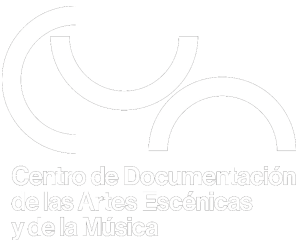Representations of music and dance in the islamic tombs of Sindh, Pakistan. (Registro nro. 121564)
[ vista simple ]
| 000 -LEADER | |
|---|---|
| fixed length control field | 02065nab a2200193 c 4500 |
| 001 - CONTROL NUMBER | |
| control field | myd_84474 |
| 003 - CONTROL NUMBER IDENTIFIER | |
| control field | ES-MaCDM |
| 005 - DATE AND TIME OF LATEST TRANSACTION | |
| control field | 20241010081322.0 |
| 008 - FIXED-LENGTH DATA ELEMENTS--GENERAL INFORMATION | |
| fixed length control field | 181003s2010 sp ||||fr 00| u|spa u |
| 040 ## - CATALOGING SOURCE | |
| Original cataloging agency | ES-MaCDM |
| 100 1# - MAIN ENTRY--PERSONAL NAME | |
| Personal name | Kalhoro, Zulfiqar Ali |
| 9 (RLIN) | 136708 |
| 245 0# - TITLE STATEMENT | |
| Title | Representations of music and dance in the islamic tombs of Sindh, Pakistan. |
| Statement of responsibility, etc | ALI KALHORO, Zulfiqar |
| 260 ## - PUBLICATION, DISTRIBUTION, ETC. (IMPRINT) | |
| Date of publication, distribution, etc | 2010 |
| Place of publication, distribution, etc | New York: |
| Name of publisher, distributor, etc | Research Center for Music Iconography RCMI, |
| 520 ## - SUMMARY, ETC. | |
| Summary, etc | RESUMEN: During the Kalhora rule of the Sindh province in southwestern Pakistan (1681-1783), sepulchral architecture gained prominence and it is believed that tombs adorned with wall paintings have been at that time built throughout the province. The tombs of the Kalhora rulers were decorated with floral and geometric designs whereas the tombs of their generals and soldiers had the figural depictions. The towns of Khudabad and Garhi, and later the village of Mian Nasir Muhammad Kalhoro, were the main artistic centers not only for the production of wall paintings in tombs but also miniature paintings made for the Kalhora rulers. Besides paintings of representing traditional tales (Sassui-Punhun, Nuri-Jam Tamachi, Leila-Majnun, Sohni-Mehar, Leela-Chanesar, Moomal-Rano, and Bijal-Rai Dyach), tombs also depict the scenes from everyday life, such as images of entertainers, animal handlers, and battle scenes reflecting the tribal chivalry. The occurrence of dancing and music scenes provides an evidence about performances in the are since the eighteenth century. The images of musical instruments in the tombs in the Larkana, Thatta and Mitthi districts reflect the secular attitudes toward the religion, among both artists but also rulers who did not try to ban or remove them from funerary architecture although Islam prohibits producing figurative images. |
| 650 ## - SUBJECT ADDED ENTRY--TOPICAL TERM | |
| Topical term or geographic name as entry element | Iconografía musical |
| 9 (RLIN) | 114726 |
| 773 0# - HOST ITEM ENTRY | |
| Title | Music in Art : International Journal for Music Iconography |
| Host Biblionumber | 81471 |
| Record control number | myd_24697 |
| Relationship information | Vol. 35, núm. 1,Spring-Fall 2010, p. 201 |
| 903 ## - LOCAL DATA ELEMENT C, LDC (RLIN) | |
| a | 84474 |
| b | 84474 |
| 942 ## - ADDED ENTRY ELEMENTS (KOHA) | |
| Koha item type | Artículos de revista |
No hay ítems disponibles.

